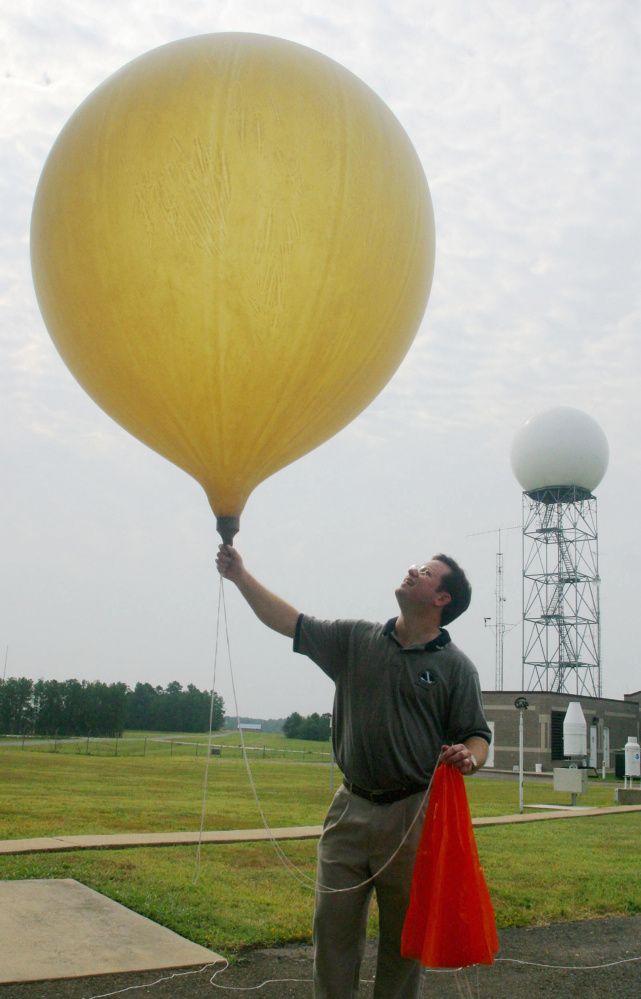When the latest computer forecast models couldn’t figure out where major Hurricane Joaquin was headed earlier this month, the National Weather Service ordered extra launches of one of its oldest tools – the weather balloon.
Twice a day, in what may be the world’s largest act of international cooperation, crews at about 850 weather offices around the globe walk outside and set loose balloons at precisely the same time.
In an age of satellites, radar, jet aircraft and high-speed computers, a method of gathering weather data that became routine more than 80 years ago would seem outdated. Not so, said William Blackmore, meteorologist with the National Weather Service’s upper-air observation program.
While all the modern advances are crucial tools for forecasting, weather balloons can do something all the rest cannot: measure the atmosphere from the surface to almost 22 miles every second, he said.
“What makes it unique is that it’s providing information every 15 to 20 feet,” Blackmore said. “At the present time, that can’t be beat.”
In the United States, 92 weather service offices make the twice-daily launches, sending the balloons, usually hydrogen-filled, into the atmosphere, Blackmore said. With a few extra launches thrown in, the United States alone sends about 70,000 to 75,000 balloons skyward annually. Each balloon sounding, including labor, maintenance and parts, costs about $300.
Around the world, there are 1,300 sites where balloons can be launched, though only about two-thirds of them take part in the daily sampling, according to the World Meteorological Organization’s website. That is about 620,500 balloons per year. This may be why so many UFO reports have been dismissed as weather balloons over the years.
Send questions/comments to the editors.



Success. Please wait for the page to reload. If the page does not reload within 5 seconds, please refresh the page.
Enter your email and password to access comments.
Hi, to comment on stories you must . This profile is in addition to your subscription and website login.
Already have a commenting profile? .
Invalid username/password.
Please check your email to confirm and complete your registration.
Only subscribers are eligible to post comments. Please subscribe or login first for digital access. Here’s why.
Use the form below to reset your password. When you've submitted your account email, we will send an email with a reset code.